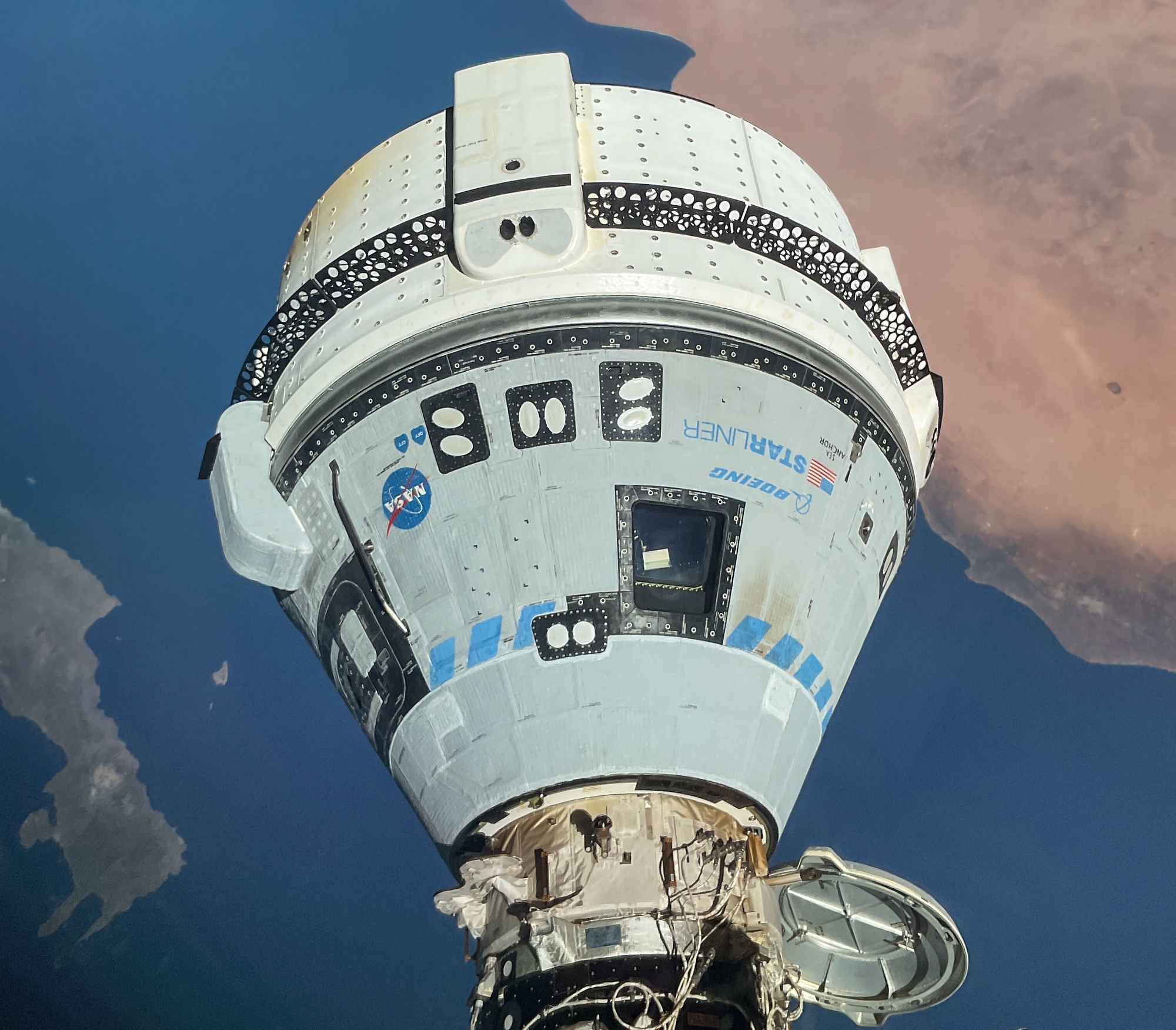Products You May Like
WASHINGTON — NASA and Boeing have pushed back the return of the CST-100 Starliner spacecraft from the International Space Station until at least early July to continue studies of propulsion system problems.
In a statement issued late June 21, NASA announced it was no longer proceeding with plans announced three days earlier to have Starliner depart the station June 25, landing at White Sands, New Mexico early June 26, to complete the Crew Flight Test (CFT) mission with NASA astronauts Butch Wilmore and Suni Williams on board.
Unlike three previous delays, NASA did not disclose a new departure date for Starliner. Instead, NASA stated only that it is “evaluating future return opportunities” for the spacecraft after a scheduled spacewalk July 2, the second of a pair of spacewalks planned at the ISS.
“We are taking our time and following our standard mission management team process,” Steve Stich, NASA commercial crew program manager, said in the statement. “We are letting the data drive our decision making relative to managing the small helium system leaks and thruster performance we observed during rendezvous and docking.”
He added that NASA now planned to carry out an agency-level review of Starliner before its departure “given the duration of the mission.” Starliner was scheduled to spend only eight days at the station but the latest delay means it will spend close to a month there.
At the June 18 briefing where NASA announced Starliner would return June 26, Stich and others sounded confident that the spacecraft would be ready to come back by then. Testing confirmed that all but one reaction control system thruster was working well, and helium leaks in the propulsion system had diminished when checked during the thruster tests.
“We really like the opportunity on the 26th because it’s a great opportunity into the White Sands Space Harbor,” Stich said then, because the pre-dawn landing time meant that winds were likely to be benign.
In the statement, he said the extra time would allow for more data collection and work around the two spacewalks planned. “We are strategically using the extra time to clear a path for some critical station activities while completing readiness for Butch and Suni’s return on Starliner and gaining valuable insight into the system upgrades we will want to make for post-certification missions.”
However, agency officials previously said they scheduled the spacewalks to avoid conflicts with potential Starliner departure dates. Dana Weigel, NASA ISS program manager, said at the June 18 briefing that if the first of the two spacewalks, scheduled for June 24, was delayed, Starliner’s then-planned June 25 undocking would take precedence. “We’ll make sure we work around the Starliner schedule.”
At the same briefing, though, officials emphasized they were not driven by schedule. “We have an opportunity to extend a little bit, and that really is an opportunity,” Mark Nappi, Boeing vice president and commercial crew program manager, said then. He noted that the eight-day stay originally planned was always intended to be a minimum that could be extended if needed to collect data, particularly since the service module that contains the propulsion system does not return to Earth at the end of the mission.
“This is an opportunity to fully understand the system’s performance without the pressure of schedule or time. We have the time,” he said. “We’ll let the data drive our decision-making.”
The NASA statement did not disclose long Starliner could stay at the station, only that the crew “is not pressed for time to leave the station since there are plenty of supplies in orbit” and there are no other missions scheduled to go to the station through mid-August. Stich said at a briefing just after Starliner’s June 6 docking that the spacecraft could remain at the station for 45 days.
NASA did not give a specific date for the next opportunity for Starliner to return to Earth. However, at the June 18 briefing, Mike Lammers, a NASA flight director supporting the CFT mission, said landing opportunities were in a “every four day” pattern driven by the station’s orbit and the location of landing sites in the southwestern United States. That would mean the next landing opportunity after the spacewalks would be around July 4.
Both at the June 18 briefing and in the latest statement, NASA emphasized that Starliner could return Wilmore and Williams now if an emergency required their immediate return. “So far, we don’t see any scenario where Starliner is not going to be able to bring Butch and Suni home,” Stich said at the briefing. “We’re just taking a little more extra time to resolve the data and also learn as much as we can while we have the service module in orbit.”
